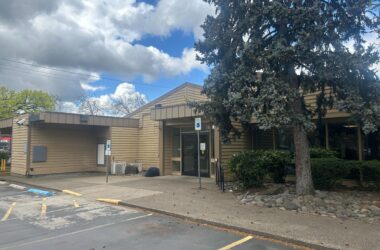 File photo
File photo
Oregon’s population has increased by 54,200 people between 2017 and ’18, according to a study recently released by Portland State University’s Population Research Center (PSU-PRC).
Within that study, Lane County alone saw an increase of 4,520 people from 2017-18. Locally, Creswell added 45 more people to its population in 2017-18. Creswell now clocks in at a population of 5,455, which is 424 more residents than recorded in the 2010 census.
But the City is not done growing yet. The projected population of Creswell is expected to reach 7,300 by 2025, and in anticipation of a steady population increase in Creswell, the City is making strides to accommodate projected growth.
A big part of that is updating the Comprehensive Plan, City Manager Michelle Amberg said, which is a planning document that guides the growth and development of the city. The City recently completed an analysis of the City’s wastewater system and water system with document updates.
Additionally, Parks and Open Space Plan update was approved at Monday night’s council meeting, and the plan is to complete a Transportation System Plan in the spring, Amberg said. Each of these documents informs the Comprehensive Plan.
With that, City Planner Maddie Phillips is working on a land analysis that will include housing needs assessment, employment lands and economic development.
Based on the land needs analysis, the City will evaluate the need for an urban growth boundary expansion, though preliminary information suggests that the city will need more land to provide for future housing needs.
Additionally, the development code is being reviewed regularly and amended as the needs of the city change. A good example is the council’s recent discussion regarding amending the development code to allow for accessory dwelling units on residential lots, Amberg said.
”This will allow for greater density and housing for more people within the City’s current boundaries,” Amberg said. ”And of course the discussion shouldn’t neglect public safety and how we provide policing services and support the fire district in serving Creswell’s growing needs.”
But why are so many people flocking here anyway?
The first obvious answer is the Interstate 5 corridor, and the fact that Creswell is only a stone’s throw away from bigger cities and their amenities. The Interstate 5 corridor also easily gets travelers and native Oregonians to Portland, as well as southern Oregon, and it is an easy drive to mountains and the ocean from Creswell.
Simply put, ”Creswell is an accessible, affordable community with a good quality of life,” Amberg said, adding that there are people who also choose Creswell because the City does not allow marijuana dispensaries.
But an increasing population also means an increasing concern with traffic control, which Amberg said is her biggest concern as the population continues to grow.
”There are times when getting around town is difficult, and we are working on a plan that will hopefully ease the congestion that will come with future growth,” she said.
Is there enough space in Creswell to accommodate the anticipated increase?
The City is working toward trying to accomodate all kinds of housing, as the City current has a large stock of single-family residential, Amberg said.
”However, Creswell could benefit from live/work housing in the downtown commercial area as well as having the need for a high quality senior housing option, or a retirement village,” Amberg said. Creswell’s downtown and east side have room for more shopping – and probably a need for a downtown association to better promote the businesses that settle there.”
STATE POPULATION GROWS
According to the study, population growth consists of two factors – natural increase and net migration. Natural increase are the number of births subtracted from the number of deaths, and net migration means the amount people moving in subtracted from people moving out.
As one might guess, in Oregon’s case, the population increase is due largely to new residents moving to the state, as net migration accounted for roughly 88 percent of Oregon’s population growth in the most recent study. That same percentage was also seen in the 2016 to 2017 studies.
Natural population increase is a very much on a downward trend. In fact, natural population increase now contributes less to Oregon’s population growth than at any time since the 1930s, according to the study. This is due to an aging population and declining birth rates, as the number of births to Oregon residents in 2017-18 was nearly 14 percent lower than its recent peak in 2007-08.
The preliminary July 1 population estimates show that Oregon’s population increased from 4,141,100 in 2017 to 4,195,300 in 2018.
This increase of 54,200 represents a decline in population growth recorded between 2016 and 2017 when the state’s population grew by 64,750 residents, according to the study.
The growth between 2017 and 2018 – a 1.3 percent year-over-year increase – is lower than the 1.6 percent growth recorded in the 2016-17 period due to lower natural increase and net in-migration, the study shows.
Mirroring the slowdown in natural increase is moderating net migration levels by over 47,000 – about 9,000 less than in 2016 to 2017, the study finds. In the four years since 2014, net migration has resulted in about 200,000 additional Oregon residents, accounting for 85 percent of the state’s growth.
Oregon’s three most populous counties – Multnomah, Washington and Clackamas counties – are all in the Portland metropolitan area experienced the largest gains in population from 2017 to ’18. Washington and Multnomah counties added over 10,000 residents each, while Clackamas County added around 6,000.
The largest percentage growth occurred in the central Oregon counties of Deschutes (3.3 percent) and Crook (2.7 percent), the study finds.
The federal Metropolitan Statistical Area (MSA) designation applies to 13 of Oregon’s 36 counties. Together these 13 counties accounted for a population increase of 50,945, which is 94 percent of Oregon’s growth.
Of Oregon’s 36 counties, 20 experienced a natural decrease, meaning there were more deaths than births. These included eastern, southwestern and coastal counties. In many, but not all counties, net in- migration offsets these decreases.
Among other cities and towns:
■ Cottage Grove added 85 more residents this year, clocking in at 10,005;
■ Springfield added 210 mor residents this year, with a population of 60, 865;
■ Eugene added more than 1,000 residents, as did Salem, Beaverton and Tigard;
■ Portland continued to add more residents than other cities in Oregon. Its 2018 population of 648,740 includes growth of 9,640 (1.5 percent) since 2017; and
■ Bend had the second biggest population gain among Oregon cities, adding 2,740 residents (3.2 percent) to reach a population of 89,505 in 2018.
The preliminary population estimates are subject to revision during a month review period. The final July 1 population estimates will be certified by Dec. 15.
For more information and to view the preliminary population estimates, visit the Population Research Center’s website.







